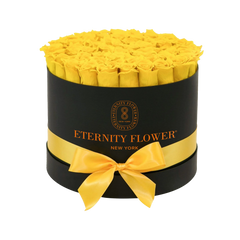Are you seeking inspiration for your flower beds or bouquets? If you're looking for some floral inspiration that begins with the letter 'P', you're in luck! We'll show you 30 pretty flowers that start with P, along with photos and helpful tips on how to cultivate them successfully.
Whether you love the soft romance of cottage gardens or the striking beauty of tropical blooms, you'll find the perfect 'P' flower to add charm and personality to your outdoor space. Ready for a floral adventure? Let's explore these flowers further!
Read more: 20 Flowers That Start with I: Inspiring Blossoms!
Pretty P Flowers
1. Pansy

Pansies are delightful cool-season flowers that brighten up any garden with their vibrant colors and charming "faces". These compact plants produce an abundance of blooms in shades of purple, yellow, white, red, orange, and even near-black! With their versatility and cheerful nature, pansies are a classic choice for containers, borders, and mass plantings.
Planting tips:
- Choose Your Spot: Pansies love full sun to partial shade. In warmer climates, a spot with some afternoon shade is ideal.
- Prepare the Soil: Enrich the soil with compost or well-rotted manure. Pansies prefer fertile, well-drained soil.
- Spacing: Plant pansies about 6-12 inches apart, allowing room for them to spread.
- Water and Feed: Water regularly to keep the soil moist, but not soggy. Feed your pansies with a balanced fertilizer every few weeks for continuous blooming.
2. Peony

Peonies are beloved for their lush, extravagant blooms that come in a stunning array of colors, from soft pinks to vibrant reds and even sunny yellows. These hardy perennials are remarkably long-lived, adding a touch of classic beauty to gardens for many years.
Planting tips:
- Sunlight: Select a spot with at least 6-8 hours of direct sun each day.
- Soil: Peonies thrive in well-drained soil rich in organic matter. Amend heavy clay or sandy soils with compost.
- Depth: The key to success is shallow planting! The pink buds ("eyes") should be no more than 1-2 inches below the soil surface.
- Spacing: Give your peony room to spread – plant them 3-4 feet apart.
3. Petunia

Petunias are beloved summer annuals known for their vibrant, trumpet-shaped flowers. These cheerful plants come in a dazzling array of colors, from pinks and purples to reds, whites, and even striking multi-colored varieties. Petunias are easy to care for and their long blooming season makes them a favorite for flower beds, containers, and hanging baskets.
Planting tips:
- Sunlight: Petunias thrive in full sun, needing at least 6 hours of direct sunlight each day for optimal blooming.
- Soil: Plant petunias in well-draining soil. They prefer a slightly acidic pH.
- Timing: Wait to plant petunias outdoors until after the last frost when the soil has warmed.
- Spacing: Space petunias about 12 inches apart to give them room to grow.
- Watering: Keep the soil consistently moist, but avoid overwatering. Petunias don't like soggy roots.
4. Phlox

Phlox are beloved perennial flowers that add vibrant splashes of color to any garden. With varieties ranging from low-growing groundcovers to tall, stately blooms, there's a phlox for every gardener. Their sweet fragrance attracts butterflies and hummingbirds, bringing life and beauty to your outdoor space.
Planting tips:
- Sunlight: Most phlox varieties thrive in full sun, but some can tolerate partial shade.
- Soil: Phlox prefer well-drained, fertile soil. Amend heavy soil with compost for better results.
- Spacing: Give phlox enough room to spread, depending on the variety you choose. Good spacing helps with air circulation, reducing disease risk.
- Watering: Keep the soil evenly moist, especially during the first growing season. Avoid overhead watering to minimize fungal diseases.
5. Pincushion Flower (Scabiosa)

Pincushion flowers, belonging to the genus Scabiosa, are charming blooms named for their unique appearance. Their rounded flower heads are adorned with protruding stamens that resemble pins stuck into a pincushion. These delightful flowers come in a variety of colors, including shades of blue, purple, pink, and white, adding a touch of whimsy to any garden.
Planting tips:
- Sunlight: Pincushion flowers thrive in full sun, so choose a spot that gets at least 6 hours of direct sunlight each day.
- Soil: Well-draining soil is essential. If your soil is heavy, amend it with compost or sand to improve drainage.
- Spacing: Plant your pincushion flowers about 12-18 inches apart to provide adequate room for growth.
- Watering: Water regularly, especially during dry periods. Aim to keep the soil evenly moist but not waterlogged.
6. Peruvian Lily (Alstroemeria)
Peruvian Lilies, also known as Alstroemeria or Lily of the Incas, are stunning flowering perennials native to South America. They are prized for their vibrant, trumpet-shaped blooms that come in a dazzling array of colors, including pink, orange, red, yellow, white, and purple. Their striking markings and long vase life make them popular in bouquets and gardens alike.
Planting tips:
- Sunlight: Choose a spot with full sun for most of the day. Some afternoon shade is beneficial in hot climates.
- Soil: Plant in well-drained soil rich in organic matter. Alstroemerias dislike soggy roots.
- Planting Depth: Plant the tuberous roots about 6 inches deep and 12-18 inches apart.
- Watering: Water regularly, especially during flowering, but allow the soil to dry slightly between waterings.
7. Poppy
Poppies are vibrant flowering plants celebrated for their delicate, papery petals and cheerful colors. Ranging from brilliant reds and oranges to soft pastels and striking purples, poppies add a burst of life and whimsy to any garden. Their seed pods are also distinctive, providing a decorative element after the blooms fade.
Planting tips:
- Sunlight is Key: Poppies thrive in full sun locations. Choose a spot with at least 6 hours of direct sunlight daily.
- Well-Drained Soil: Poppies prefer soil that drains well. Avoid overly heavy or waterlogged areas.
- Direct Sowing: Poppy seeds are best sown directly in the garden where you want them to grow. They don't often transplant well.
8. Primrose
Primroses are delightful wildflowers known for their cheerful yellow blooms that brighten up woodlands and gardens. They are one of the earliest signs of spring, offering a sweet fragrance and a touch of delicate beauty. Primroses symbolize youth and new beginnings, making them a popular choice for cottage gardens and naturalized areas.
Planting tips:
- Soil: Plant them in rich, well-draining soil that retains moisture.
- Spacing: Space primrose plants about 6-12 inches apart for adequate growth.
- Watering: Keep the soil consistently moist, especially during hot weather. Avoid overwatering, which can cause root rot.
- Best Time to Plant: Plant primroses in the fall or early spring, giving them time to establish before the summer heat.
9. Protea
Proteas are a magnificent flowering plant genus native to South Africa. Their captivating blooms boast unique textures and vibrant colors, reminiscent of otherworldly artichokes. These ancient plants have been around for millions of years and symbolize diversity, courage, and transformation.
Planting tips:
- Sunlight is Key: Plant Proteas in full sun to ensure ample flowering.
- Well-Drained Soil: Proteas are sensitive to root rot, so choose a sandy, well-drained soil with slightly acidic pH.
- Mindful Watering: Water deeply, but allow the soil to dry slightly between waterings. Avoid overwatering.
10. Pentas
Pentas, also known as Egyptian star clusters, are a delightful addition to any sunny garden. These heat-loving plants produce vibrant clusters of star-shaped flowers in shades of pink, red, white, lavender, and purple. Pentas are a favorite among pollinators, attracting butterflies and hummingbirds all summer long.
Planting tips:
- Sunlight: Pentas thrive in full sun, so plant them in a location that receives at least 6-8 hours of direct sunlight daily.
- Soil: Well-drained soil is essential. Pentas can tolerate various soil types, but avoid overly wet conditions.
- Spacing: Space your pentas plants 12-18 inches apart for optimal growth and airflow.
- Watering: Water pentas regularly, especially during hot, dry weather. Aim to keep the soil slightly moist but not waterlogged.
You might also like: Brighten Your Spring with 20 Flowers Starting with N
Precious P Flowers
11. Penstemon

Penstemons, also known as beardtongues, are a delightful genus of flowering plants beloved for their vibrant, tubular blooms. With hundreds of species, they offer a stunning array of colors including reds, pinks, blues, purples, and even white. Native to North America, penstemons are easy to grow and attract hummingbirds and other pollinators to your garden.
Planting tips:
- Choose the right spot: Penstemons love full sun, so select a location that gets at least 6 hours of direct sunlight daily.
- Well-draining soil: These plants thrive in well-drained soil. If your soil is heavy, add some sand or compost to improve drainage.
- Proper spacing: Space most penstemons 12-18 inches apart for good airflow and optimal growth.
- Don't overwater: Penstemons are quite drought-tolerant. Water thoroughly when planting, then water deeply only when the soil feels dry to the touch.
12. Passionflower

Passionflowers are stunning flowering vines known for their intricate, exotic blooms. With their vibrant colors and otherworldly floral structure, they add a touch of the tropics to any garden. The most common types produce edible fruits known as passion fruit.
Planting tips:
- Sunlight: Passionflowers thrive in full sun, needing at least 6 hours of direct sunlight daily.
- Soil: Choose well-drained soil rich in organic matter. A slightly acidic pH is ideal.
- Support: Passionflowers are vigorous climbers. Provide a trellis, fence, or other sturdy structure for them to grow on.
- Watering: Keep the soil consistently moist but not waterlogged. In warm weather, deep watering may be needed a few times a week.
13. Periwinkle

Periwinkles (Vinca minor and Vinca major) are beloved groundcovers renowned for their trailing vines, glossy evergreen leaves, and delicate blue-violet flowers. These adaptable plants thrive in shade, making them perfect for brightening up those difficult spots in your garden.
Planting tips:
- Prepare the Soil: Enrich your soil with compost before planting to boost growth.
- Watering: Water deeply after planting, and then regularly during the first growing season. Once established, they are quite drought-tolerant.
- Choose Your Spot: Periwinkles prefer partial shade, but they can also handle full sun. Well-draining soil is a must.
- Timing: Plant periwinkles in the spring or fall.
- Spacing: Place plants about 12-18 inches apart to allow for their spreading habit.
14. Petticoat Daffodil

Petticoat Daffodils (Narcissus bulbocodium), also known as Hoop-Petticoat Daffodils, are miniature daffodils with a unique, whimsical appearance. They feature tiny, splayed petals overshadowed by an enormous, trumpet-shaped center that resembles a billowing petticoat. These cheerful yellow blooms add a touch of old-world charm to gardens in early to mid-spring.
Planting tips:
- Sunlight: Choose a spot with full sun for the best flowering. They can tolerate some light shade.
- Soil: Petticoat Daffodils prefer well-drained soil. If your soil is heavy, add some grit or sand to improve drainage. They enjoy slightly acidic soil.
- Depth and spacing: Plant bulbs about 3-5 inches deep and 3-4 inches apart.
- Watering: Water bulbs well after planting. During their active growth period, water regularly if there's no rainfall. Once foliage starts to die back, reduce watering.
15. Pheasant's Eye (Adonis)

Pheasant's Eye refers to several species within the Adonis genus, known for their vibrant flowers and delicate, fern-like foliage. These charming annuals or short-lived perennials offer blooms in fiery shades of red, orange, or yellow, often with a contrasting dark center. They add a splash of color to cottage gardens, rock gardens, or borders.
Planting tips:
- Sunlight: Pheasant's Eye thrives in full sun but can tolerate some partial shade.
- Soil: Opt for well-drained soil with moderate fertility. They dislike overly wet conditions.
- Spacing: Plant the seedlings or thin direct-sown plants about 6-12 inches apart for optimal growth.
- Water: Water young plants regularly. Established plants are relatively drought-tolerant.
16. Pincushion Protea
Pincushion Protea (Leucospermum) are striking evergreen shrubs native to South Africa. They are renowned for their vibrant, long-lasting blooms that resemble colorful pincushions. These flowers come in a dazzling array of shades including yellow, orange, pink, and red. Their unique appearance and long vase life make them sought-after additions to floral arrangements.
Planting tips:
- Climate: Pincushion Protea thrive in warm climates (USDA zones 9-11) and cannot tolerate frost.
- Sunlight: Choose a spot with full sun for optimal flowering.
- Soil: The key is excellent drainage. Plant in well-draining, slightly acidic soil. Sandy or rocky soils are ideal. If your soil is heavy, plant on a mound to improve drainage.
- Watering: These plants are drought-tolerant once established. Water deeply but infrequently, allowing the soil to dry out between waterings. Avoid overwatering, which can lead to root rot.
17. Pink (Dianthus)
Dianthus, commonly known as Pinks, are a delightful addition to any garden. These flowering plants offer a riot of color, with blooms in shades of pink, red, white, and even variegated patterns. Their spicy, clove-like fragrance adds an extra dimension to their charm. Dianthus come in a wide array of sizes, from low-growing groundcovers to tall, elegant cut-flower varieties.
Planting tips:
- Sunlight: Pinks love full sun, so choose a spot that gets at least 6 hours of direct sunlight each day.
- Soil: Ensure your soil is well-drained and slightly alkaline. Dianthus absolutely dislike soggy conditions.
- Spacing: Depending on the variety, space plants 6-18 inches apart to allow for healthy growth.
- Watering: Water regularly while your pinks are establishing, but allow the soil to dry slightly between waterings once they are settled in.
18. Prairie Smoke (Geum triflorum)
Prairie Smoke is a delightful North American wildflower known for its nodding, bell-shaped pink flowers and the wispy, smoke-like plumes that form after blooming. This hardy perennial thrives in open prairies and woodlands, adding a touch of whimsical charm to any garden.
Planting tips:
- Sunlight: Prairie Smoke prefers full sun to partial shade.
- Soil: Choose a well-draining soil. This plant tolerates dry to moderately moist conditions.
- Spacing: Plant them about 12 to 18 inches apart to allow for spread.
- Planting Time: Plant Prairie Smoke in spring or fall.
19. Pulsatilla (Pasque Flower)
Pulsatilla vulgaris is more commonly known as the Pasque Flower. This beautiful, low-growing perennial charms with its large, bell-shaped blooms in soft shades of purple, pink, red, and white. These appear in very early spring, sometimes even poking through the last remnants of snow. The flowers make way for feathery, silver seedheads that are just as ornamental.
Planting tips:
- Choose the right spot: Pasque flowers thrive in sunny locations with well-drained soil. They particularly enjoy alkaline soil, so limestone rock gardens are perfect.
- Prepare the soil: Ensure your soil is loose and enriched with some organic matter if needed. Pasque flowers dislike heavy, wet soils.
- Provide space: Allow enough room for the plant to spread, about 12-15 inches apart.
- Water moderately: Water young plants regularly, but established Pasque flowers are drought-tolerant.
20. Painted Daisy (Pyrethrum)
Painted Daisies are a cheerful addition to any garden with their showy, daisy-like blooms in a dazzling array of reds, pinks, purples, and white. These hardy perennials are not only beautiful but also functional. The flowers contain pyrethrins, a natural insecticide, making them a great companion plant to help deter pests.
Planting tips:
- Sunlight: Painted Daisies thrive in full sun but can tolerate some partial shade.
- Soil: Choose well-drained soil. They dislike wet feet!
- Spacing: Plant them about 18-24 inches apart to allow for good air circulation.
- Timing: Plant in spring after the last frost or in early fall.
- Watering: Water regularly during establishment, then water deeply but less frequently once mature. Avoid overwatering.
Pleasant P Flowers
21. Potentilla
Potentillas, also called cinquefoils, are a delightful addition to any garden. These members of the rose family offer a wide array of colors, from vibrant yellows and oranges to soft pinks and whites. They come in both shrubby and herbaceous perennial forms, making them suitable for borders, rock gardens, or even containers.
Planting tips:
- Sunlight: Potentillas crave full sun! Choose a spot that gets at least 6 hours of direct sunlight each day.
- Soil: Well-drained soil is a must. Potentillas dislike soggy roots. If you have heavy clay soil, amend it with compost or sand for better drainage.
- Spacing: Give your Potentillas room to grow – check the plant tag for specific spacing requirements based on the variety you choose.
- Watering: Water regularly while they're getting established. Once settled in, they are fairly drought-tolerant.
22. Portulaca (Moss Rose)
Portulaca, commonly known as Moss Rose, is a charming, low-maintenance succulent that bursts with vibrant blooms. Native to South America, this sun-loving plant thrives in hot, dry conditions, making it a perfect choice for adding a dose of color to rock gardens, borders, and containers. Its fleshy leaves and stems help it store water, ensuring its resilience in drought-like conditions.
Planting tips:
- Sunlight: Choose a spot that basks in full sun for at least 6 hours a day. This will guarantee an abundance of blooms.
- Soil: Well-drained, sandy, or even slightly rocky soil is ideal. Avoid heavy, waterlogged soils.
- Planting: You can either sow seeds directly outdoors after the last frost or purchase seedlings from your local garden center. Space plants about 6-12 inches apart.
- Watering: Moss Roses are incredibly drought-tolerant. Water deeply but infrequently, allowing the soil to dry out completely between waterings.
23. Persian Buttercup (Ranunculus)
Persian Buttercups (Ranunculus asiaticus) are charming tuberous perennials that enchant gardens with their vibrant, multi-petaled blooms resembling peonies or roses. These beauties come in a rainbow of hues, from delicate pinks and yellows to fiery reds and oranges. Native to the Mediterranean and Asia, Persian Buttercups add a touch of whimsy and romance to your landscape.
Planting tips:
- Sunlight: Choose a spot basking in full sun for the most prolific flowering.
- Soil: Persian Buttercups crave well-drained soil rich in organic matter.
- Spacing: Plant corms about 4-6 inches apart and 2 inches deep, with the pointed end facing down.
- Watering: Water deeply after planting, then moderately while the plant is actively growing. Avoid overwatering, which can lead to rot.
24. Prickly Pear Cactus
Prickly pear cacti (genus Opuntia) are a fascinating group of plants known for their flat, fleshy pads, vibrant flowers, and edible fruits. These resilient cacti thrive in hot, arid environments, adding a touch of unique beauty to any desert landscape.
Planting tips:
- Choose Your Spot: Prickly pears love full sun and well-draining soil.
- Soil Matters: For optimal growth, use a sandy or gritty soil mix designed for cacti and succulents.
- Space for Growth: Be mindful of the mature size of your chosen prickly pear variety. Provide ample space to avoid overcrowding.
- Water Wisely: These drought-tolerant plants only need deep watering during long periods of dryness. Overwatering can lead to root rot.
25. Parrot Lily
Parrot Lilies are a striking and unique addition to any garden. Their vibrant crimson and green blooms truly resemble miniature tropical parrots. This South American native adds a touch of the exotic to borders, containers, and cut flower arrangements.
Planting tips:
- Sunlight: Parrot lilies thrive in full sun to partial shade.
- Soil: Well-drained, fertile soil is essential. Amend heavy soil with sand or compost for better drainage.
- Planting: Plant tubers (rhizomes) horizontally in spring, about 2-3 inches deep and 12-18 inches apart.
- Depth: Planting the tubers deeper can help protect them in colder zones.
- Watering: Water regularly, especially during hot weather, but avoid overwatering.
26. Polyanthus
Polyanthus are a vibrant and cheerful type of primrose known for their clusters of brightly colored blooms in shades of red, yellow, orange, pink, and more. They are hardy, cool-season flowers that add a burst of life to gardens during late winter and early spring. Polyanthus plants form a rosette of textured leaves, from which tall stems emerge, each topped with a cluster of flowers.
Planting tips:
- Timing: Plant Polyanthus in the fall for blooms the following spring or purchase established plants from nurseries in late winter or early spring for instant color.
- Light: Polyanthus prefer partial shade or dappled sunlight. Avoid planting them in full sun, especially during hot summers.
- Soil: Choose rich, well-draining soil. Incorporate compost or other organic matter to improve soil quality.
- Spacing: Plant Polyanthus about 6-8 inches apart to allow for good air circulation.
- Watering: Keep the soil evenly moist but not soggy. Water deeply and allow the soil to dry slightly between waterings.
27. Penstemon
Penstemons, often called "beardtongues," are a delightful group of flowering perennials boasting a vast array of colors – from vibrant blues and pinks to warm reds and yellows. Their tubular flowers are a favorite among hummingbirds and other pollinators. Native to North America, penstemons are remarkably adaptable, making them suitable for various garden settings.
Planting tips:
- Choose the right spot: Penstemons love full sun! Find a location in your garden that gets at least six hours of direct sunlight daily.
- Well-drained soil: These beauties thrive in soil that drains well. Avoid overly heavy or waterlogged areas.
- Spacing: Give your penstemons room to spread out. Space plants around 12-18 inches apart, depending on the variety.
- Watering: Water regularly while your penstemon plants are getting established. Once mature, they become relatively drought-tolerant.
28. Prairie Gentian
Prairie Gentian (Gentiana puberulenta), also known as Downy Gentian, is a North American wildflower renowned for its brilliant blue-violet blooms that appear in late summer and fall. This perennial plant thrives in prairies and open areas, adding a unique splash of color to the autumnal landscape.
Planting tips:
- Sunlight: Prairie Gentians love full sun, so select a planting site that gets at least 6 hours of direct sunlight daily.
- Soil: Opt for well-drained soil with a slightly acidic pH. Consider adding compost or leaf mold to enrich the soil before planting.
- Spacing: Space seedlings or young plants about 12 inches apart for adequate growth.
- Watering: Water regularly, especially during hot, dry periods. However, avoid overwatering, as Prairie Gentians dislike soggy soil.
29. Platycodon (Balloon Flower)
Balloon flowers are a beloved perennial addition to any garden. Their unique, puffy buds swell like balloons before bursting into beautiful star-shaped blossoms. Usually in shades of blue, violet, pink, or white, these flowers add a touch of whimsy from summer into early fall.
Planting tips:
- Sunlight: Choose a spot that gets full sun to partial shade.
- Soil: Well-drained, fertile soil with slightly acidic pH is ideal. Amend with compost or well-rotted manure before planting.
- Spacing: Plant them 12-18 inches apart to give them room to spread.
- Watering: Water regularly, especially during hot, dry spells. Mulch can help retain soil moisture.
30. Plumeria (Frangipani)
Plumeria, also known as Frangipani, are small trees or shrubs prized for their stunning, fragrant flowers. Their blooms come in a dazzling array of colors, including white, yellow, pink, red, and even vibrant mixes. Native to tropical regions, these plants add a touch of exotic beauty to gardens and homes.
Planting tips:
- Sunlight: Plumeria crave full sun. Choose a location that gets at least 6 hours of direct sunlight daily.
- Soil: Well-draining soil is crucial. A mix of cactus potting mix and sand is ideal. Avoid heavy, waterlogged soils.
- Watering: Water deeply, but allow the soil to dry out slightly between waterings. Overwatering can lead to root rot.
Read more: 20+ Lovely Flowers Starting with L: Explore These Luminous Bloom
Conclusion
The world of flowers that start with P is surprisingly vast and enchanting. Whether you admire their vibrant colors, their delightful fragrances, or their unique textures, these flowers bring joy and a touch of natural wonder to our lives.
Perhaps this exploration of "P" flowers has inspired you to add a few to your own garden or to simply appreciate their beauty the next time you encounter them. Remember, whether in the wild or in a carefully cultivated space, these pretty flowers remind us of the incredible diversity and splendor of the natural world. Happy gardening!



























